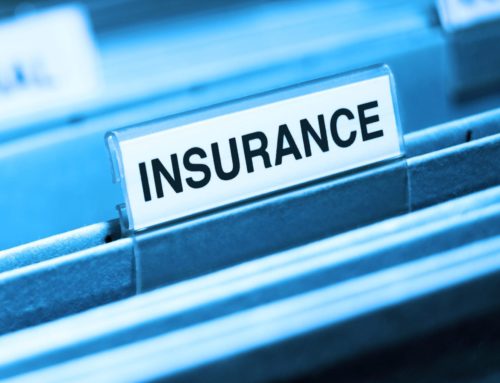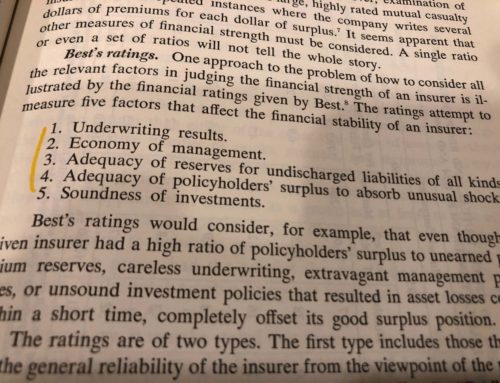Almost every business or person needs to protect themselves with property insurance. In this blog post, I wanted to set the foundation to property insurance and so for the next few posts, we will dig in!
The Origin of Property Insurance
Property Insurance owes it’s founding to a home builder, in more ways than one! The Great Fire of London in the year 1666 destroyed a substantial portion of the city of London England in just a few days. Immediately a London physician, Dr. Nicholas Barbon, began a speculative home building operation. Part of his marketing was an agreement to rebuild any house if it “burnt down for any reason or means of fire.”
Barbon’s insuring the homes he built was so well received he formed an insurance company, London Assurance, in 1680 to insure other property. Interestingly, his premium rating system for frame structures and brick/masonry structures has been copied in concept to this day. His successes led to the formation of many insurance companies in Great Britain, America and eventually all over the world.
Since Barbon’s fire insurance company, the building business and the insurance business has thrived. As demonstrated in The Great Fire, everything can be taken away from us in one fail swoop. If it were not for the insurance business, builders would not be able to build buildings of grandeur. On the other hand, if it were not for builders constructing fine buildings, insurance companies would not be in the fire insurance business. As you will read, there are very broad coverage forms available to cover virtually every type of property that a contractor may encounter.
Property Insurance is a “Two Party” Contract
This coverage concept is pretty basic, primarily due to the fact it is a “Two Party Contract.” The parties are the policyholder (the insured) and the insurance company.
Replacement Cost vs. Actual Cash Value
When an insurance company issues a Property Insurance policy the policy will more than likely state that the “valuation” of loss will be based on the Replacement Cost or on the Actual Cash Value. The Replacement Cost valuation is exactly what it says, that it is the actual cost to rebuild a building in the same way the building was built just prior to the loss. The Actual Cash Value is defined as the Replacement Cost, minus depreciation (for wear, tear and age). Actual Cash Value includes economic obsolescence such as a change in fashion or the development of new or more efficient machinery. The Replacement Cost basis is far superior in coverage to the Actual Cash Value basis of valuation. Sometimes, a “Replacement Cost” policy may be a misnomer. A certain provision called “coinsurance” may decrease what the insurance company will pay, even with the Replacement Cost coverage. There are several other types of valuation clauses but these are the two primary in the marketplace.
Coinsurance Requirement
An insurance company’s method of encouraging Property Insurance policyholders to insure property for full value is a Coinsurance Clause. Under this provision, if there is a “partial loss” and the policyholder does not insure the proper value of the property, the insurance company will penalize the policyholder by having the policyholder share in the loss. If however the total value of the property is underinsured (or not insured to value) and there is a “total loss,” the insurance company will pay the policy limit.
This coinsurance provision is a requirement that rewards policyholders who insure property for the full value of property. In the event of a loss, the policyholder should be made whole by the insurance company. This contractual provision is typically illustrated in the policy as one of three different percentages. They are 80%, 90% and 100% coinsurance.
The 100% provision is the most restrictive and requires that the policyholder maintain Property Insurance limits at 100% of the Replacement Cost value (or in the case of an Actual Cash Value policy, the depreciated value) of the property. For example if a building has a Replacement Cost of $200,000, the policyholder should insure it for $200,000 in the case of 100% coinsurance, $180,000 in the case of 90% coinsurance, and $160,000 in the case of 80% coinsurance. But note, if the 80% coinsurance is selected and you insure a $200,000 building for $160,000, the policy will not pay more than the face value of the policy.
When the policy insurance limit is set with the most restrictive (100%), it often does bear a less premium than compared to an 80% or 90% coinsurance limit. Because determining the exact replacement cost value is tough for an insurance agent, we encourage all of our policyholders to seek help from a local appraiser or contractor.
Proper Valuation is a Must
Securing the proper insurance limits on ALL of your property is necessary, but it is often difficult to establish. What you paid for something several years ago may not be the limit you should insure the item for today. For example, computer technology and the cost to replace an old computer have declined, but the cost to replace a building has gone up!
Many times business owners lose track of the actual value of their assets and the replacement of property because of depreciation of those items (when their average life value is more than one year). For tax purposes, these depreciated values show up at reduced values on a schedule titled “Fixed Asset” schedule. It is normally a mistake to rely on these figures in arriving at the amount of insurance.
These moving values cause problems in determining the proper limits of insurance on all of these coverages, especially buildings and business personal property. The best method to determining the value is to closely analyze replacement cost. So where do you start? Go room-by-room is one way to determine the value of the building’s contents. Prepare a spreadsheet and list each major item. Break it down as to the approximate new cost. Catalogs of tools, equipment and materials can help in an establishing replacement cost amounts.
If the values of equipment and the building’s contents are large enough, a contractor may want to consider insuring these items on an “Agreed Value.” If there are more than one location, perhaps insure on a “Blanket” basis.
Coordination of Coverage
Occasionally there may be more than one policy in effect on the same property. In this unlikely event, if there is a loss, each policy will pay in the same proportion that the policy limit bears to the total sum of the limits.
Appraisal
A little known, thus little used provision in property policies could be used to resolve claim disputes, inexpensively, when the policyholder and insurance company have a different opinion as to the value of damaged property. Each party can appoint a representative (appraiser). These two appraisers, in turn, appoints a third person as an umpire. These three people determine the value of the damaged property which is binding on both parties.
More exacting information is contained in the policy provision. Some refer to this method as arbitration. This process is normally less expensive and more effective than a court procedure.
Subrogation
When an insurance company pays a claim, the insured transfers its right to the insurance company to collect from a negligent third party. All forms of insurance and bonding have this provision, sometimes by different titles. In medical insurance it is called Right of Recovery.
Loss Prevention
Preventing loss to property, injury to workers and damage to the public go hand-in-hand. Loss prevention is one measure insurance companies provide to protect the property they insure. Skilled experts called safety engineers, risk managers, etc. help prevent exposures and offer loss control recommendations. Recommendations may be as simple as removing a gas can from the insured building to designing an elaborate system of fire resistive devices. The proper attitude of an insured is essential in controlling losses and insurance company personnel will appreciate a great attitude!
For more information about this or any insurance topic, please call our office in Chattanooga at 423-763-1111 or our Nashville office at 615-970-1111. We handle all lines of insurance both personal insurance and business insurance. We stand ready to be of service to you!





